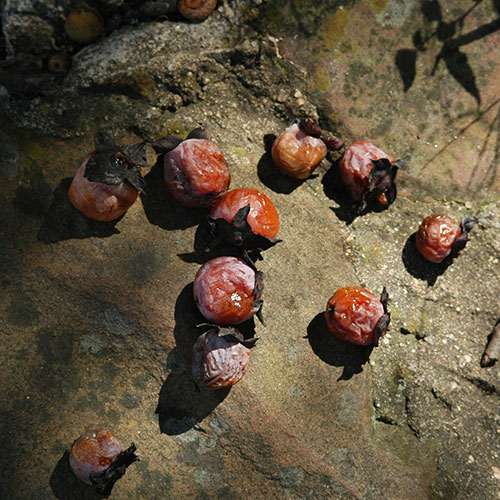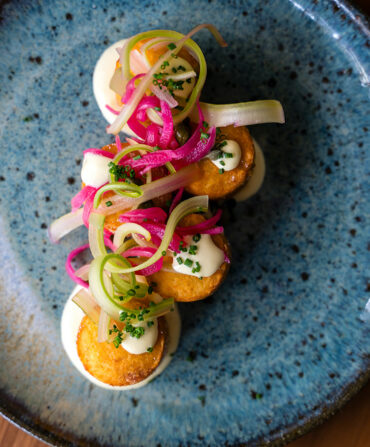Wild Persimmon (Diospyros virginiana)
Many people think that wild persimmons don’t ripen until after the first frost, but that’s just not true. Persimmons ripen as the days get shorter, which means they’re tasting pretty good right about now.
What it looks like: The wild persimmon is a tree that grows seventy to eighty feet tall with thick, gray-black bark. The toothless, short-stalked, oval leaves grow two to six inches long, positioned alternately on darkly colored twigs. Fragrant, bell-shaped flowers with pale yellow petals produce round orange fruits with leathery skin and flat brown seeds.
Where to find it: Fields, forests, along the edges of woods, in abandoned lots, and along roads.
When to look: You can begin to check persimmon trees for ripe fruit as early as the end of August. Here in the South, though, prime persimmon season starts in the middle of October and continues through November. Because skin color can vary with the weather, the best way to determine whether a persimmon is ripe is by touch. Generally, persimmons are ready to eat when they are very soft, but the only way to know for sure is to take a bite—an under-ripe persimmon will dry your mouth out quickly.
Foraging tip: To ripen persimmons that aren’t quite ready, place them in a paper bag with unwaxed apples.
What to do with it: My favorite thing to do with wild persimmons is to make a simple, sugarless purée that can be used like a jam.
Persimmon Jam
Ingredients
20 wild persimmons
1 tsp. lemon juice
Preparation
Use your fingers to remove the skin and the tops from the persimmons. Push them through a food mill to remove the seeds. Add lemon juice to the pulp, if desired, for a hint of tart flavor that highlights the sweetness of the persimmons. Persimmon purée tastes wonderful with wild game and organ meat.








